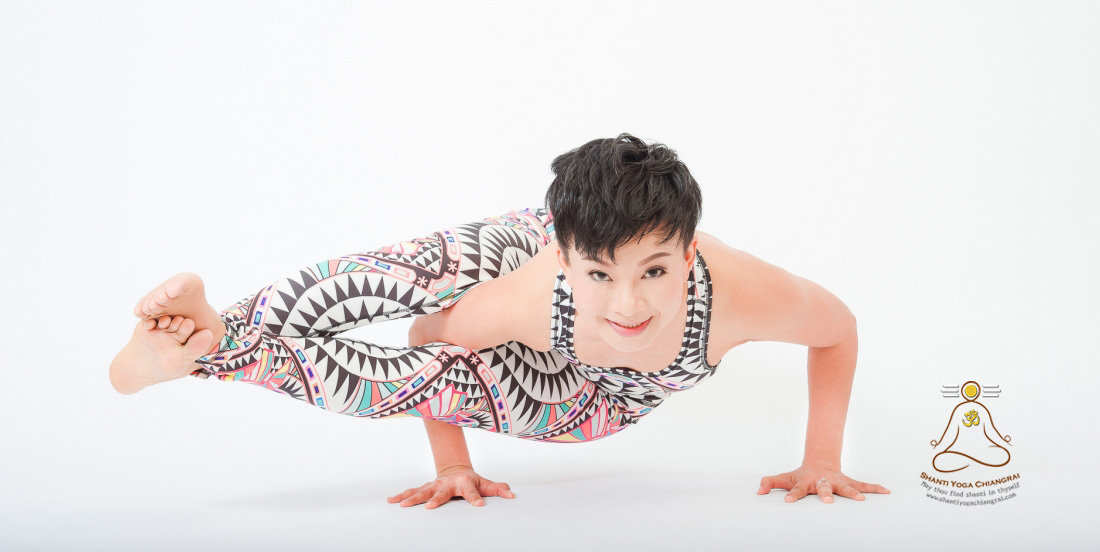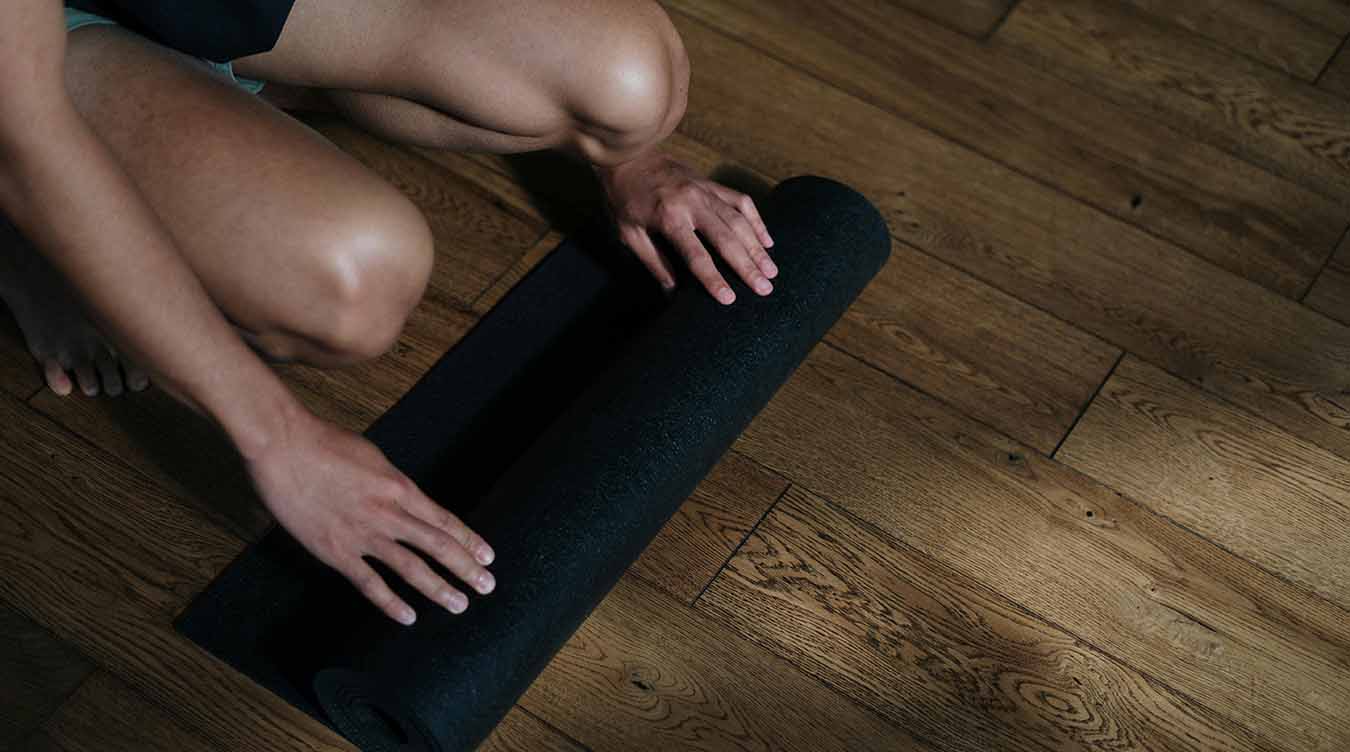“ชานติโยคะเชียงราย” จากความรัก สู่ชุมชนแห่งสุขภาพ จุดเริ่มต้นจากความรักในโยคะ ชานติโยคะเชียงราย ก่อตั้งขึ้นด้วยความรัก และหลงใหลในโยคะของทิพย์ หรือกำไลทิพย์ ศิริธรรมขันติก่อนที่จะมีชานติโยคะ ทิพย์เองให้ความสำคัญในการดูแลสุขภาพของตัวเองมาโดยตลอด เพื่อช่วยคลายความตึงเครียดจากงานประจำ และภาระหน้าที่ในฐานะพี่สาวคนโตที่ต้องดูแลพี่น้อง 4 คน ดูแลแม่ที่สูงวัย อีกทั้งยังเป็นแม่เลี้ยงเดี่ยวที่ลูกสาวกำลังเติบโต จึงมองเห็นถึงความสำคัญในการที่จะต้องดูแลสุขภาพร่างกายของตัวเอง ควบคู่ไปกับการดูสุขภาพจิตใจ และฝึกฝนตัวเองให้เป็นคนมองโลกในแง่ดี เพื่อให้มีความพร้อมเผชิญกับทุกสถานการณ์ การออกกำลังกายต่างๆ ไม่ว่าจะเป็น การปั่นจักรยาน การเต้นแอโรบิค การเดิน การวิ่ง ฯลฯ ได้ทดลองเล่นมาพอสมควร แต่ทิพย์กลับตกหลุมรัก “โยคะ” อย่างถอนตัวไม่ขึ้น โยคะทำให้ทิพย์ค้นพบว่าช่วยให้ร่างกายได้ยืดหยุ่น แข็งแรงขึ้น และช่วยให้มองโลกในแง่ดีมากขึ้น จึงไม่น่าแปลกใจที่ทำให้ทิพย์หลงรักและหลงใหลใน “โยคะ” จากความรักและหลงใหล กลายเป็น “ชานติโยคะเชียงราย” เรียกได้ว่า “โยคะ” คือ จุดเริ่มต้นของแรงบันดาลใจ ในการใช้ชีวิต ความผ่อนคลาย ปล่อยวางในทุกๆ สิ่งระหว่างที่ฝึก “โยคะ” ทำให้รู้สึกชีวิตมีพลังเพิ่มขึ้น ความเหนื่อยล้าจากการทำงาน หรือจากเรื่องราวต่างๆ จะมีมากมายแค่ไหน เมื่อได้ฝึก “โยคะ” ความเหนื่อยล้าเหล่านั้นก็หายไปหมดสิ้น ทิพย์เองได้เริ่มฝึกโยคะอย่างจริงจัง และศึกษาศาสตร์แห่งโยคะต่างๆ เรียนรู้และฝึกฝนจนวันหนึ่งสามารถเป็น “ครูสอนโยคะ” และสร้าง “ชานติโยคะเชียงราย” ขึ้น ด้วยวัตถุประสงค์เพื่อจะได้มีพื้นที่ ที่ให้ตัวเองได้ผ่อนคลาย และเปิดพื้นที่ให้กับผู้ที่สนใจเข้ามาฝึกฝนด้วยกัน มากกว่าการยืดเส้นยืดสาย “โยคะ” เป็นจุดเริ่มต้นที่ทรงพลังในการสร้างแรงบันดาลใจในการใช้ชีวิต การฝึกโยคะไม่เพียงแค่ทำให้ร่างกายยืดหยุ่น แข็งแรง ยังช่วยให้ผู้ฝึกมีสมาธิ ลดความเครียด อีกทั้งยังมีผลต่อจิตใจที่ทำให้ชีวิตมีพลัง และมีสุขภาพที่ดีขึ้น สร้างสมดุลให้กับร่างกาย ช่วยทำให้รู้สึกว่าชีวิตมีพลังเพิ่มขึ้นอย่างเต็มที่ มากกว่าแค่เป็นสถานที่ฝึกโยคะ แต่เป็นชุมชนแห่งการแบ่งปัน ชานติโยคะเชียงราย ไม่ได้เป็นเพียงแค่สถานที่ฝึกโยคะอย่างเดียว แต่เปรียบเสมือนชุมชนแห่งสุขภาพที่ผู้คนมาพบปะ แลกเปลี่ยน เรียนรู้ และเติบโตไปด้วยกัน ชานติโยคะมีกิจกรรมต่างๆ มากมาย เช่น กิจกรรมการฝึกโยคะทั้งใน และนอกสถานที่ การฝึกอบรมเพื่อส่งเสริมความรู้ความเข้าใจเกี่ยวกับโยคะ และการสร้างแรงบันดาลใจให้ผู้คนทั่วไป เปรียบเสมือนบ้านหลังที่สองที่อบอุ่น เต็มไปด้วยมิตรภาพ เสียงหัวเราะ และรอยยิ้ม ชานติโยคะทำให้ทิพย์ได้พบกับผู้คนใหม่ๆ ที่มีอาชีพ และมุมมองการใช้ชีวิตที่หลากหลาย แต่ถึงแม้ว่าจะมีความหลากหลายแตกต่างกัน แต่สิ่งหนึ่งที่เหมือนกันคือ มีความรักใน “โยคะ” จึงทำให้เกิดมิตรภาพดีๆ ระหว่างกัน ชานติโยคะกลายเป็นสถานที่ที่ผู้คนมาเติมพลังให้กับชีวิต ค้นพบความสุข และสร้างสมดุลให้กับร่างกายและจิตใจไปโดยปริยาย “โยคะ” ไม่ใช่รักแรก แต่เป็นรักที่คอยปกป้อง และสอนให้เรารู้จักดูแลตัวเอง ทิพย์ ผู้ก่อตั้งชานติโยคะเชียงราย
Tag: ชานติโยคะ เชียงราย
Ashtanga Yoga
Ashtanga Yoga: A Whole Handbook Ashtanga yoga is a strenuous style of hatha yoga that adheres to a predetermined series of poses. It’s a demanding exercise meant to increase endurance, flexibility, and strength. The Sanskrit term for Ashtanga yoga translates to “eight-limbed path.” Ashtanga yoga’s eight limbs are as follows: Yama (limitations) Niyama (conformity) Asanas are bodily positions. Pranayama: the control of breath Pratyahara, or the “senses being withheld,” Dharana means focus. Dhyana, or the practice of meditation Samadhi, or realization Ashtanga yoga sessions usually start with a warm-up and go through the prescribed poses in order. After a cool-down and savasana (corpse posture), the session will conclude. The Mysore practice is the name given to the predetermined set of poses in Ashtanga yoga. Students master the posture sequence at their own pace in the self-paced Mysore practice. Although it can be difficult, ashtanga yoga is also incredibly beneficial. It’s a fantastic method to enhance both your mental and physical well-being. Advantages of Yoga Ashtanga Ashtanga yoga offers a plethora of advantages, such as: Enhanced power increased adaptability Enhanced endurance Decreased tension Enhanced mood Enhanced vitality Increased awareness of oneself How to Get Ready for a Class in Ashtanga Yoga There are a few things you can do in advance of your first session if you are new to ashtanga yoga: Dress comfortably so that you can move around. Bring a bottle of water and a yoga mat. Get to class early so you have time to settle in. Inform the instructor of any illnesses or injuries you may have. What to anticipate from an Ashtanga yoga session Warm-up exercises are usually the first part of an Ashtanga yoga class, and then the Mysore practice. After a cool-down and savasana (corpse posture), the session will conclude. Students master the posture sequence at their own pace in the self-paced Mysore practice. Every pose will be shown by the instructor, who will also offer variations based on students’ skill levels. It will be emphasized to you to pay attention to your body and refrain from overexerting yourself. You don’t need to compare yourself to other practitioners of Ashtanga yoga because it’s a non-competitive practice. Beginner Ashtanga Yoga Pose Here are some fundamental ashtanga yoga positions to get you started if you’re new to the practice: Sun salutation, also known as surya namaskar, is a sequence of poses connected in a flowing fashion. The four-limbed staff pose, or chaturanga dandasana, is a difficult pose that calls for flexibility and strength. Urdhva mukha svanasana, also known as upward-facing dog, is a backbend that opens the shoulders and chest. Adho mukha svanasana, or downward-facing dog, is a forward-bending pose that works the calves and hamstrings. Standing posture known as warrior pose (virabhadrasana I) strengthens the legs and core. In summary You may greatly enhance your physical and mental well-being by practicing Ashtanga yoga. There are plenty of materials available to assist you in getting started if you’re interested in giving ashtanga yoga a try. Most gyms and yoga studios provide ashtanga yoga classes. A plethora of online materials, including articles and videos, are also available to teach you the fundamentals of ashtanga yoga.


